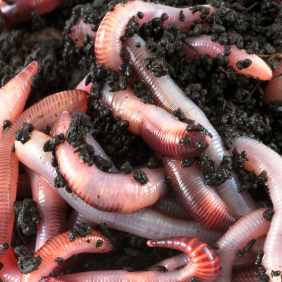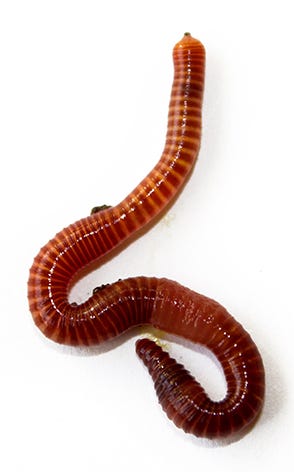Great starter red wigglers: For indoor setups
Whatever You Required to Learn About Red Wigglers for Composting
Red wigglers, or Eisenia fetida, play an essential role in the world of composting, changing organic waste into valuable soil amendments. The procedure of setting up a worm bin and preserving it can position obstacles.
What Are Red Wigglers?

(Lake James Worms)
Indigenous to The United States and copyright, red wigglers are surface-dwelling organisms that prefer moist, cozy environments abundant in decaying raw material. Their diet plan consists mainly of rotting plant product, food scraps, and various other organic particles, which they take in and break down efficiently. As they digest this product, they generate nutrient-rich spreadings that boost dirt fertility.
Red wigglers are hermaphroditic, possessing both male and women reproductive body organs, and can recreate swiftly under ideal problems. Overall, red wigglers are crucial factors to the process of recycling natural waste into important garden compost.
Advantages of Using Red Wigglers
Utilizing red wigglers in composting systems uses numerous advantages that boost both the performance of waste management and the quality of the resulting garden compost. These worms, medically called Eisenia fetida, are especially efficient at damaging down raw material, transforming cooking area scraps and lawn waste right into nutrient-rich compost at an accelerated price.
One of the main advantages of making use of red wigglers is their capacity to consume large quantities of organic product, often processing their weight in food waste daily. This high consumption price leads to faster decay and minimizes the volume of waste sent to garbage dumps. In addition, the spreadings generated by red wigglers are abundant in essential nutrients, valuable bacteria, and enzymes, making them an exceptional plant food for yards and plants.
Additionally, red wigglers thrive in a variety of settings, making them versatile for both interior and exterior composting systems - red wigglers. Their visibility in a garden compost bin aids to freshen the product, stopping odors and promoting a healthy composting procedure. In general, using red wigglers not just adds to efficient waste administration however also sustains sustainable horticulture methods with the production of top quality compost
(red wiggler farming)
Establishing Your Worm Bin
To efficiently set up a worm bin, it is necessary to pick an appropriate container that satisfies the demands of red wigglers while providing a favorable setting for composting. An ideal bin can be made from plastic, wood, or metal, with a capacity of at least 1 square foot for each extra pound of worms.
Make certain the container has ample drainage holes to avoid excess wetness, as red wigglers prosper in a moist, yet not water logged, setting. red wigglers. The container must additionally be aerated to give enough air movement, protecting against anaerobic problems that can harm the worms
A suitable location for the worm bin is an awesome, dark area, totally free from direct sunlight and severe temperature levels, as red wigglers favor a temperature level series of browse around this site 55 to 77 degrees Fahrenheit.
Before introducing the worms, prepare bed linens products such as shredded paper, cardboard, or coconut coir, which will certainly supply both habitat and food. Dampen the bedding gently to create an inviting environment for the worms. Last but not least, take into consideration putting a cover on the container to maintain moisture and minimize pests, while ensuring it can be quickly gotten rid of for upkeep.
Feeding and Treatment Guidelines
Feeding red wigglers is a vital element of maintaining a healthy and balanced composting system. These worms flourish on a varied diet plan, primarily composed of natural materials such as vegetables and fruit scraps, coffee premises, and crushed eggshells. It is important to prevent feeding them meat, dairy, and oily foods, as these can develop unpleasant smells and draw in parasites.
When introducing food to your worm container, slice or shred products into smaller sized pieces to promote quicker decay. Beginning with little quantities to assess the worms' consumption rate, progressively enhancing the quantity as they adapt. It is recommended to alternative feeding locations within the bin to motivate comprehensive blending and aeration of the compost.

Troubleshooting Common Issues
Keeping a growing worm composting system can in some cases provide challenges that require focus and troubleshooting. Usual problems include an unpleasant smell, which often shows overfeeding or the visibility of anaerobic problems. To fix this, minimize the quantity of food added and ensure correct oygenation by mixing the bed linen material.
Another constant issue is the escape of worms from the container. This can happen because of excessive dampness or improper ecological conditions. Frequently check the moisture degrees, intending for a damp yet not soggy consistency, and preserve optimal temperature levels between 60-80 ° F(15-27 ° C )to develop a comfy habitat for your red wigglers.
Bugs, such as fruit flies, can also get into worm bins. red wigglers. To combat this, cover food scraps with a layer of bed linen or shredded paper to discourage flies from laying eggs. In addition, make sure that any type of food included is fresh and devoid of mold and mildew, which can draw in unwanted insects
Lastly, if your worms appear inactive, look for stress variables such as temperature changes or poor wetness. Addressing these typical issues will assist maintain a healthy and balanced and effective worm composting system.
Conclusion
In summary, red wigglers, or Eisenia fetida, play an essential duty in lasting waste management through vermicomposting. Proper setup and maintenance of a worm bin, along with adherence to feeding guidelines, guarantee a growing community that lessens garbage dump payments.